Making a Business Case for DHAs (A Cost Benefit Analysis)
by Chris Giusto on Mar 11, 2022 8:03:46 AM
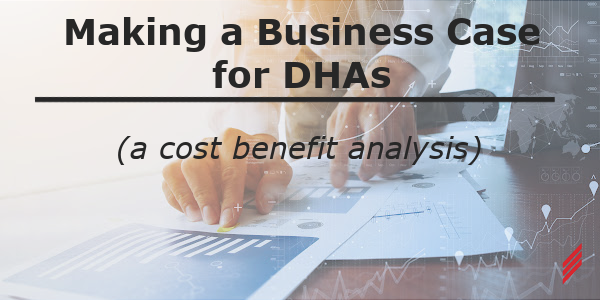
The objective of this article is to demonstrate the value of a Dust Hazard Analysis (DHAs) and Combustible Dust Safety (CDS) Program. I would argue, and will attempt to illustrate in what follows, that conducting a DHA and creating a Combustible Dust Safety Program is an investment with a guaranteed return!
Conducting a DHA is of little value if there is no follow through. Implementing and maintaining the mitigation actions recommended in the DHA Report is what is meant by "Combustible Dust Safety Program." If you are not familiar with a CDS program, I like to illustrate this concept with the Combustible Dust Safety Cycle, which is shown below.
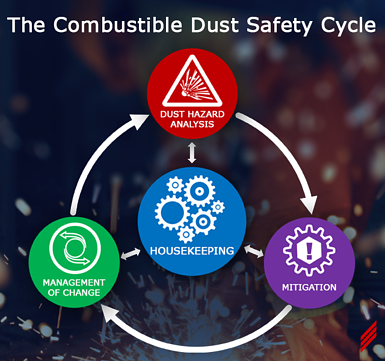
As you see, the DHA is just part of the cycle, but it is where everything starts and serves as the foundation of a CDS Program. For a more detailed explanation you can read this blog. How to Implement a Combustible Dust Safety Program: Using the Combustible Dust Safety Cycle
There are four primary costs associated with conducting a DHA and implementing a CDS Program for an existing facility:
- DHA:
The cost for a DHA depends on several factors, including the size of the facility, the processes and equipment involved, and the number and size of duct collection systems. Other cost factors, which are usually not as significant, are the number of materials (dusts) handled, the facility location, and the availability of drawings, data, and records. Most DHAs will fall somewhere between $5,000 to $25,000 depending on the factors above. The average cost for DHAs we have conducted is about $10,000 (2021 data) .
- Dust Testing:
Like DHAs, a number of factors determine the cost of dust testing, which can range from $0 to $23,000+. The availability and applicability of published data, the number of samples, and the number of tests required for each sample will ultimately determine the total cost. It is quite common that not all samples have to be tested, and not all tests (of which there are about a dozen possibilities) are always required. Dust testing is not always required, but when it is, it has averaged about $6,300 for our clients.
- Mitigation:
Mitigation costs can be vary greatly, and depend primarily on the current state of hazard recognition and protection in the facility. If many hazards have been identified and protected in accordance with NFPA, mitigation costs can be quite low. If, on the other hand, a facility has not done a good job of identifying hazards and implementing protection the costs could be hundreds of thousand dollars, or in some cases even millions.
- Training:
NFPA 652 requires hazard awareness training for all affected employees. Hallam-ICS currently offers a live webinar training session for $750 and live on-site training for $1500 when combined with a DHA (2022 rates). There are some other training requirements, for example operation and maintenance of explosion protection equipment, but most vendors offer that along with the equipment purchase.
What might these costs look like for a typical facility?
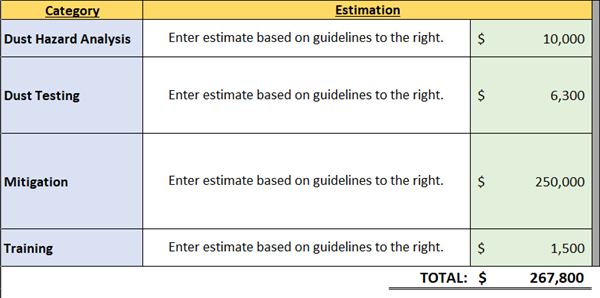
What do you get in return for these investments? There are five primary benefits, which you can learn about by downloading a free recording of a webinar where I go over each of them in detail.
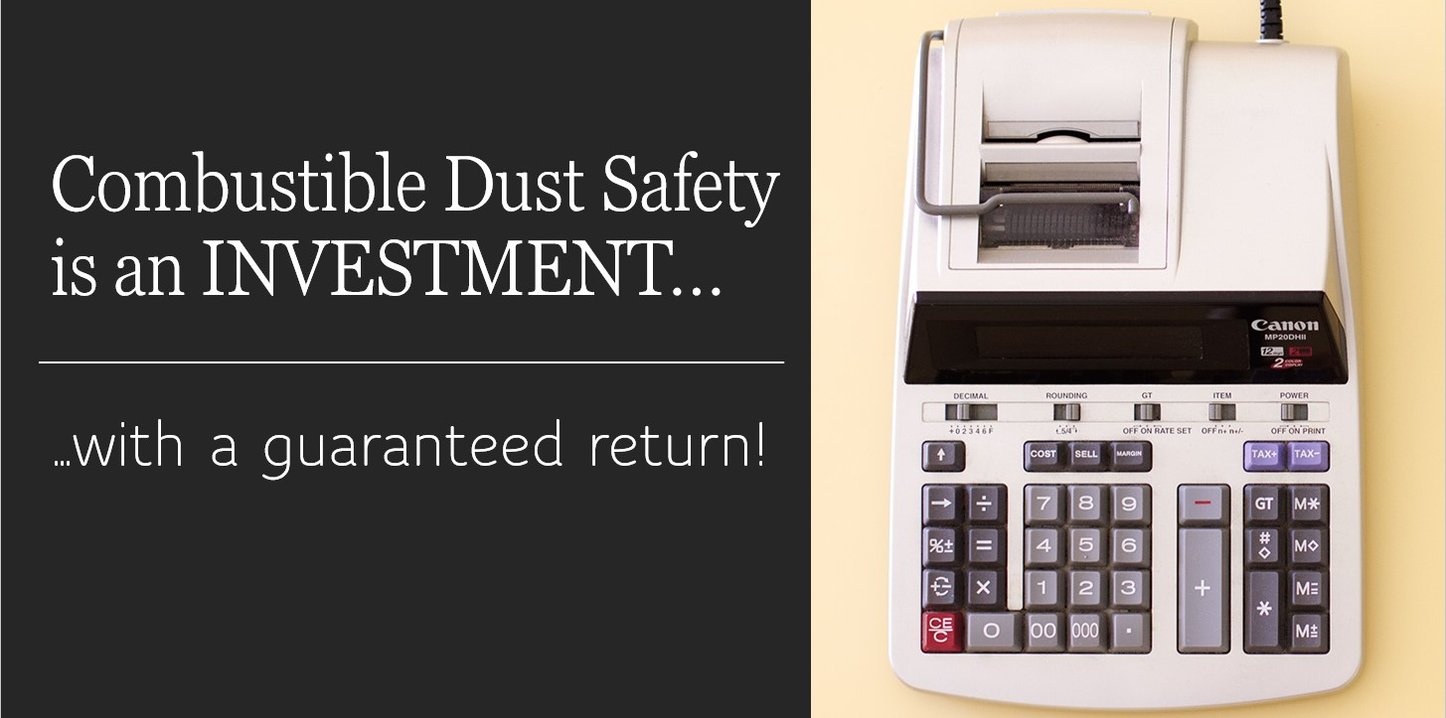
For the purposes of this article, however, we are going to focus on #5 – You Can’t afford Not To. Simply put, combustible dust events are expensive and avoiding the costs associated with them is a significant financial benefit. Let’s take a look at some of the potential costs of an event:
- Injuries & Fatalities:
National Safety Council (NSC) 2019 data shows the average cost for a burn injury was $58,284. Severe burn injuries often require weeks or even months in a burn center, including multiple surgeries. Depending on the extent and severity of their injuries, it costs between $200k-$1M+ per victim to stay in a burn unit. The average cost per employee fatality in 2019 was $1,220,000.
- Indirect Costs:
These are difficult to quantify and include items like the following:
- Any wages paid to injured workers for absences not covered by workers' compensation
- The wage costs related to time lost through work stoppage associated with the worker injury
- The overtime costs necessitated by the injury
- Administrative time spent by supervisors, safety personnel, and clerical workers after an injury
- Training costs for a replacement worker
- Lost productivity related to work rescheduling, new employee learning curves, and accommodation of injured employees
OSHA’s $afety Pays calculator uses an Indirect Cost Ratio of 1.1 for injuries exceeding $10,000, and NSC notes that this multiplier could be as high as 2.12. One of these factors should be multiplied by the direct costs outlined above to estimate the indirect costs.
- Lost Production:
Think about how much an hour of downtime costs your facility in lost production. Now how many hours (or days, or weeks) will the facility be down after a large fire or explosion? Consider what equipment might be damaged and how long it might take to repair or replace. For example, dust collectors are frequent locations for explosions, but most facilities do not have a spare collector on hand. What is the lead time on a replacement? How long will installation take? What upstream or downstream equipment will be affected?
- Facility Damages:
Costs can vary greatly depending on the type of facility and extent of the damage. However, data from 2018-2020 published in the Combustible Dust Incident Report by DustSafetyScience.com showed that about two thirds of combustible dust incidents resulted in facility damages exceeding $100,000, and about one third of the time damages exceeded $1 million.
- Fines:
Fines will vary based on the specific circumstances of an incident, but as of January 15, 2022, the Federal OSHA max penalty per violation is $14,205, and $145,027 per willful or repeated violation. One of the most common citations from OSHA is improper housekeeping (fugitive dust accumulation). How good are your housekeeping procedures? If an incident occurs, at least one OSHA citation is likely. Have you already been cited or warned about something that could result in a repeated/willful violation?
- Lawsuits:
This one probably has the potential to be the most expensive. Employees, their families, local residents, and first responders may all potentially seek financial restitution for injuries or damages. We have even seen local government seeking reimbursement for emergency response expenses. The average employment-related lawsuit will cost the company $200,000, which includes an average $40,000 settlement paid to the employee. Settlements for injuries can be much higher depending on the extent of the injuries, work time missed, ability to work again, etc. ($100k’s - $millions)
- Increased Insurance Premiums:
This can be difficult to quantify, but facilities could see a significant increase in their insurance premiums after a combustible dust incident. In some cases, insurers may offer discounts for completing a DHA or implementing certain mitigation measures. In these instances, the value of that discount is usually quantified.
- Loss of Reputation & Bad Publicity:
This is nearly impossible to quantify, but consider the following hiring and employee retention implications:
- A 2017 CareerBuilder survey found that 71% of US workers will not apply at a company with negative press.
- Retaining employees after a crisis can increase salaries by 20%, and replacing an employee often costs ~20% of their salary.
- Harvard Business Review research found a bad reputation costs a company at least 10% more per new hire.
You can apply some of these statistics to your staffing situation, turnover, and salary structure to make a reasonable estimate.
Now, let’s look at a hypothetical example, with the following assumptions:
- Assume an existing, medium-size facility
- $50 million annual revenue
- Operates 24/7, 50 weeks/year
- One moderately sized explosion, no secondary explosions
- One worker burned, expected to recover
- No fatalities
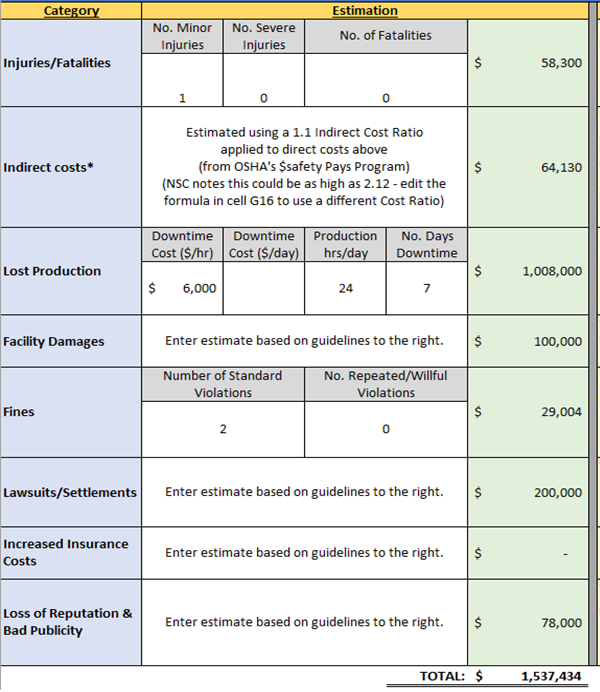 This theoretical example, which is clearly on the low end of possible costs of an explosion, totals over $1.5 million!
This theoretical example, which is clearly on the low end of possible costs of an explosion, totals over $1.5 million!
I’m sure you can easily imagine a scenario where the costs would be several or tens of millions of dollars. For example, a willful violation penalty if the facility is already aware of combustible dust issues, multiple injured workers, secondary explosions, and more extensive down time could all cause costs to be much, much higher than our example.
An event like this can cause financial ruin for a company, even if the facility is not damaged beyond repair.
Devil’s Advocate:
What if we do not have an incident?
At the end of the day, we are talking about RISK.
If your facility is handling combustible dust and is not compliant with NFPA standards, it is a matter WHEN you will have an incident, not IF you will have one.
Did you know?
* Imperial Sugar was in operation for 90 years before the explosion that leveled that facility.
* The US Chemical Safety Board has never investigated an explosion where the facility was in full compliance with NFPA standards.
Is there a break-even point? What if mitigation costs exceed the cost of an incident? Are we better off (financially) doing nothing?
The amount of money a facility must spend on mitigation costs is an indication of how many unprotected hazards existed in the facility. I would therefore argue that the higher the mitigation costs, the more likely a facility is to have an event.
(These scales are arbitrary, and only intended to illustrate the relationship, not to quantify it.)
The difference in cost between conducting a DHA and implementing a Combustible Dust Safety Program versus an explosion is easily an order of magnitude. But don’t take my word for it. Click here to download our free Cost Benefit Analysis Worksheet that was used for the example above, and do your own analysis for your facility.
About the Author
Chris Giusto is Regional Manager for the South Atlantic and Director of Combustible Dust Safety at Hallam-ICS. He works with clients to improve processes & safety, reduce waste & energy consumption, increase flexibility & capacity, and build new facilities. He has over 20 years of engineering experience and leads Hallam’s Combustible Dust Safety Service offerings. He’s spent nearly his entire career working with combustible dust hazards and designing NFPA-compliant equipment and systems. With additional expertise in material handling and dust collection system design, he and his team bring a comprehensive approach to practical solutions for improving safety and meeting NFPA requirements.
Read My Hallam Story
About Hallam-ICS
Hallam-ICS is an engineering and automation company that designs MEP systems for facilities and plants, engineers control and automation solutions, and ensures safety and regulatory compliance through arc flash studies, commissioning, and validation. Our offices are located in Massachusetts, Connecticut, New York, Vermont and North Carolina and our projects take us world-wide.
You May Also Like
These Related Stories
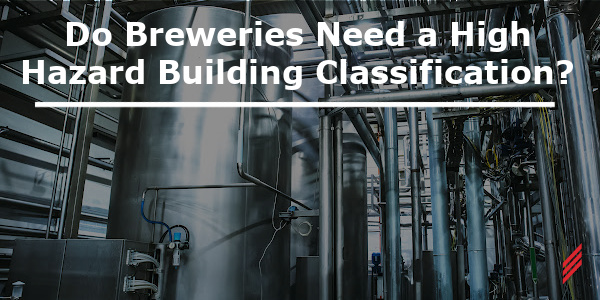
Do Breweries Need a High Hazard Building Classification?

5 Examples of Good Engineering Practice Exceeding Minimum Requirements of Building Codes


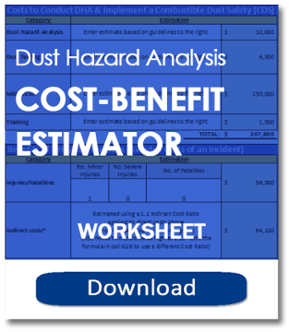

No Comments Yet
Let us know what you think